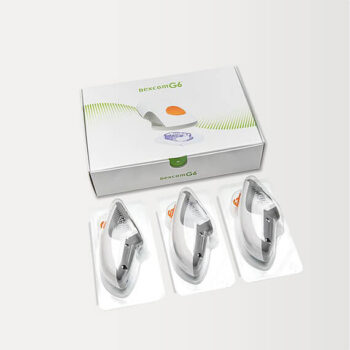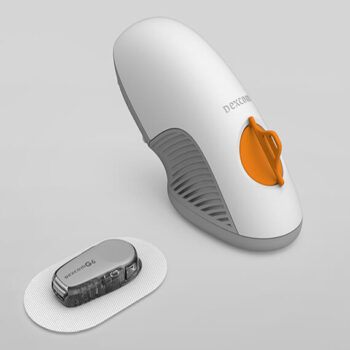Table of content
- Introduction
- Understanding diabetes in the elderly
- The importance of exercise for elderly with diabetes
- Choosing the right exercise for elderly diabetics
- Safety precautions
- Getting started with gentle workouts
- Tips for staying motivated
- Nutrition and diabetes
- Consulting with healthcare professionals
- Conclusion
Introduction
Want to explore the benefits of diabetes exercises for elderly? Let us provide a range of safe and effective workout options and offer practical tips on incorporating regular physical activity into a daily routine. Whether you’re an older adult looking to manage your diabetes better or a caregiver seeking guidance for a loved one, this article will serve as your roadmap to a healthier and more active life.
Diabetes is a prevalent chronic condition that affects millions of people worldwide, and its management requires a multi-faceted approach. One crucial aspect of diabetes management, especially for elderly individuals, is exercise. Engaging in gentle workouts tailored to the needs and limitations of older adults can significantly control blood sugar. Moreover, it promotes overall health and quality of life.
Understanding diabetes in the elderly
Diabetes is a metabolic disorder characterized by elevated blood sugar levels, which can result from either insufficient insulin production or the body’s inability to use insulin effectively. Among the elderly, type 2 diabetes is more common, often linked to factors such as genetics, sedentary lifestyles, and poor dietary choices. Managing diabetes becomes increasingly critical with age, as it can lead to various complications like heart disease, neuropathy, and vision problems.
The importance of exercise for elderly with diabetes
Exercise plays a pivotal role in diabetes management, particularly for older adults. Regular physical activity can:
Improve insulin sensitivity: Exercise helps the body use insulin more efficiently, which can lead to better blood sugar control.
Lower blood sugar levels: Engaging in physical activity and diabetic exercises for elderly can lower their blood sugar levels, reducing the need for medication.
Enhance cardiovascular health: Elderly individuals with diabetes are at higher risk of heart disease, making cardiovascular exercise especially beneficial.
Increase muscle mass: Strength training can aid in preserving and building muscle, improving overall strength and balance.
Choosing the right exercise for elderly diabetics
Choosing the right exercise routine is a matter of prime importance for older adults. It is because they need to take precise actions that provide them with maximum benefits with minimum risks of developing complications. Here are some of the most common exercises that you can consider the best exercises for diabetes in elderly:
Aerobic exercises
Aerobic diabetes exercises for elderly, also known as cardio exercises, are excellent for improving heart health and burning calories. Elderly individuals can choose activities like brisk walking, swimming, cycling, or low-impact aerobics. Aim for at least 150 minutes of moderate-intensity aerobic exercise per week.
Strength training
Strength training exercise for elderly diabetics helps maintain muscle mass and bone density, which can decline with age. Consider using resistance bands, free weights, or bodyweight exercises like squats and push-ups. Incorporate strength training into your routine at least two days a week.
Flexibility and balance exercises
Flexibility and balance exercises are crucial for preventing falls and injuries in the elderly. Yoga, tai chi, and simple stretching routines can help improve flexibility and stability. Aim for 10-15 minutes of flexibility and balance exercises each day.
Safety precautions
Before starting diabetes exercises for elderly, it’s essential to take specific safety precautions, especially if you have diabetes.
Consult your healthcare provider: Discuss your exercise plans with your doctor. Pre-consultation is always better because it ensures that the exercises are safe and suitable for your condition. Moreover, you can get additional guidance that may assist you in performing your workout without any hassles.
Monitor blood sugar levels: Check your blood sugar before and after exercise to prevent hypoglycemia (low blood sugar). You can use CGM devices for this purpose. You can buy Freestyle Libre 3 sensor from us in this regard. It is a highly accurate and reliable device.
Stay hydrated: Drink plenty of water before, during, and after your workouts to avoid dehydration. This is because dehydration is strongly unacceptable in the body of elderly diabetics. It may lead to cramps and other complications if you do not consume enough quantity of water.
Wear proper footwear: Ensure you have comfortable, supportive shoes to reduce the risk of foot problems. These footwear also improve the balance of your body while doing some dynamics. In this way, they prevent the risks of falls.
Getting started with gentle workouts
Begin your exercise journey gradually and listen to your body. Start with shorter sessions and low-intensity exercises, gradually increasing the duration and intensity as your fitness improves. Keep a log of your workouts and blood sugar levels to track your progress.
Tips for staying motivated
Staying motivated to exercise for elderly with diabetes can be challenging, but these tips can help:
Set realistic goals: Establish achievable fitness goals to track your progress.
Find a workout buddy: Exercising with a friend can make workouts more enjoyable and provide accountability.
Vary your routine: Keep things interesting by trying different exercises and activities.
Reward yourself: Treat yourself when you reach milestones to stay motivated.
Nutrition and diabetes
Diabetic exercises for elderly alone are not enough to manage diabetes. A balanced diet is equally crucial. Focus on:
Carbohydrate management: Monitor carbohydrate intake and choose complex carbohydrates like whole grains.
Portion control: Pay attention to portion sizes to avoid overeating.
Hydration: Stay well-hydrated, as dehydration can affect blood sugar levels.
Consulting with healthcare professionals
Always consult with your healthcare team before making significant changes to your exercise or dietary regimen. They can provide personalized guidance and ensure your diabetes management plan is safe and effective.
Conclusion
Incorporating gentle diabetes exercises for elderly into your daily routine is an essential component of managing diabetes. The benefits of exercise extend beyond blood sugar control to encompass improved overall health and well-being. By choosing the right exercise routine, taking safety precautions, and maintaining a healthy diet, elderly individuals with diabetes can enjoy a better quality of life and reduce the risk of diabetes-related complications. Remember, it’s never too late to start prioritizing your health and well-being through exercise.
Frequently Asked Questions
What are the benefits of diabetes exercises for the elderly?
Exercise offers several advantages for elderly individuals with diabetes. It improves insulin sensitivity, lowers blood sugar levels, enhances cardiovascular health, and increases muscle mass. These benefits contribute to better blood sugar control and overall well-being.
Why is exercise important for managing diabetes in the elderly?
Exercise plays a crucial role in diabetes management for older adults. It helps the body use insulin more efficiently, reducing the need for medication. Additionally, it lowers the risk of heart disease and preserves muscle mass, improving strength and balance.
What are some recommended aerobic exercises for elderly diabetics?
Aerobic exercises like brisk walking, swimming, cycling, or low-impact aerobics are excellent choices for elderly individuals with diabetes. Aim for at least 150 minutes of moderate-intensity aerobic exercise per week.
What flexibility and balance exercises are suitable for the elderly?
Elderly diabetics can benefit from exercises like yoga, tai chi, and simple stretching routines. These activities improve flexibility and stability and should be done for 10-15 minutes each day.
How can strength training benefit elderly diabetics?
Strength training helps maintain muscle mass and bone density, which can decline with age. You can use resistance bands, free weights, or bodyweight exercises like squats and push-ups. Incorporate strength training into your routine at least two days a week.













Write a comment
Your email address will not be published. All fields are required